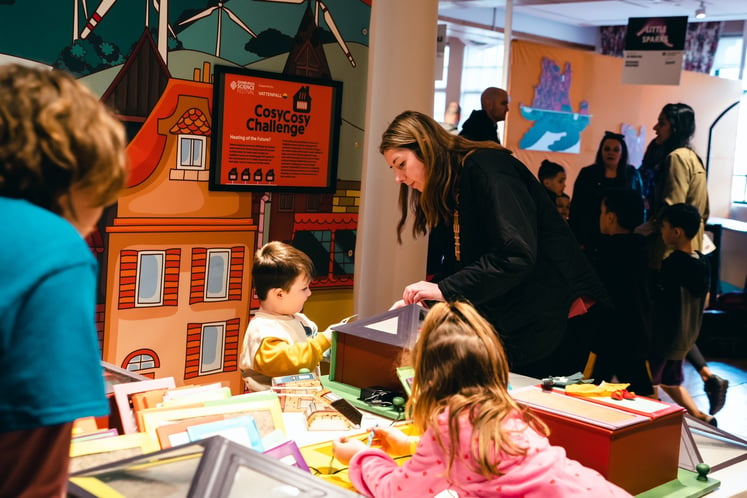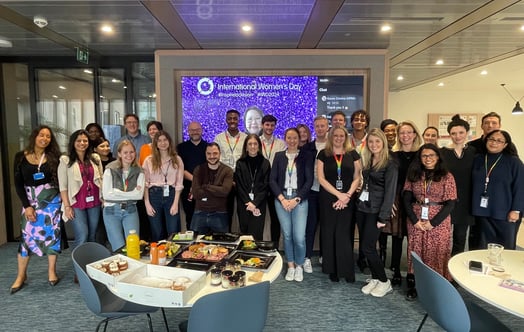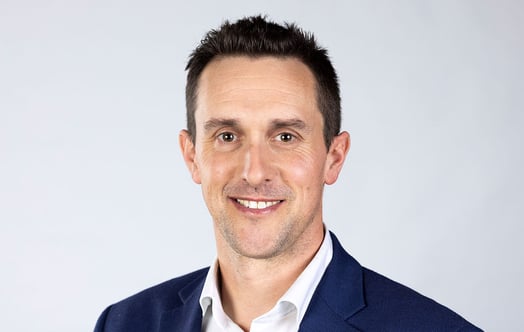Mithila Nanda, Engineering Manager at Vattenfall UK, shares her thoughts on how diversity in STEM is critical to realise successful heat networks and reach net zero – filling skills gaps and enhancing teams.
This article was originally published in The Engineer on 12th February 2024. The content has since been updated. The original article can be viewed here.
Progress to mitigate the impact of climate change is slipping down the political agenda and reaching the UK’s net zero targets is becoming increasingly out of reach. You don’t need to have a career in science to see the blindingly obvious climate emergency we are facing, but we need those that do to help find solutions for our future.
There are many reasons as to why we are losing focus on addressing climate change and one of those is the overwhelming task of filling the gap in our workforce and supply chain.
That’s why raising awareness of this skills gap is so important – women are the most under-represented demographic in STEM (Science, Technology, Engineering and Mathematics) fields.
Although STEM fields are widely regarded as critical to national economies, worldwide, most countries have not achieved gender equality in STEM. Both, worldwide and in the UK, only 35% of all students in STEM related fields of study are women.
For the UK to reach net zero by 2050, research from the National Grid shows we will have to create and fill 400,000 low carbon jobs. There are so many routes to get into the industry and there needs to be a united focus from the Government, companies and educational organisations to get that huge number of roles created and filled.
A Diverse Heat Network survey found that 19% of the heat network workforce are female. It’s clear from this data that a special focus should be placed on inspiring women and girls into STEM subjects, so that they have the skills they need to enter the low carbon energy industry. For those already sitting in a career safety blanket, finding the money or time to retrain or transfer to a low carbon career is often low on the agenda, especially with the current cost of living crisis.
Investing in our future workforce
At Vattenfall we know that empowering young people is one of the ways forward. One of our main activities is reaching young people to inspire them into low carbon careers. For example, we are currently delivering a heat network in Scotland and through our social value work we aim to reach 1000 students this year alone in conjunction with Powering Futures, and with similar planned activity in London and Bristol, where we are also currently delivering heat networks.

Heat networks are essential to decarbonising heating, which account for more than one third of carbon emissions across the UK. Currently the supply chain and skills to deliver this technology are very slim. An estimated 81,000 jobs could be created nationally in the heat network sector by 2030, however these opportunities will not be realised if the skills system is not better supported.
By 2030, Vattenfall’s Heat Business in the UK has the ambition to invest £1 billion and this is a huge opportunity for young people or those seeking a career change to make a tangible difference to the climate crisis.
Working in the low carbon energy industry is a life-long career choice. The roles are so varied and it’s empowering to feel that each day of work is making a difference to our planet for generations to come.
There needs to be a huge push on gender equality within STEM subjects, not only to reach net zero, but it is only possible to get the best from individuals when they are surrounded by a diverse and inclusive team.
More about Mithila and her career in Engineering
Bringing female perspectives into the world of engineering is so important in shaping our future into how we would like it to be. It’s not always easy, but definitely worth the challenge and I strive to be the change I want to see in the world.
When I was around 15 years old, I remember visiting my uncle who was a civil engineer during Dubai’s building boom. I visited his company's construction site and I remember seeing hundreds of drawings across the walls of his site cabin. When he pointed out the buildings created from those drawings, I thought it was magic! I Googled how to become an engineer and the rest is history.
I love what I do to help improve people's lives. The work of Engineers is not always obvious, but you learn to appreciate the value of the way things are designed, built and operated, in all aspects of life.

For guidance on how to begin a career in the heat network sector, and resources to learn more about the industry, explore the Heat Networks Industry Council’s (HeatNIC) careers page.



